SMALL DOG BREEDS
Chocolate Shih Tzu: The Sweetest Companion
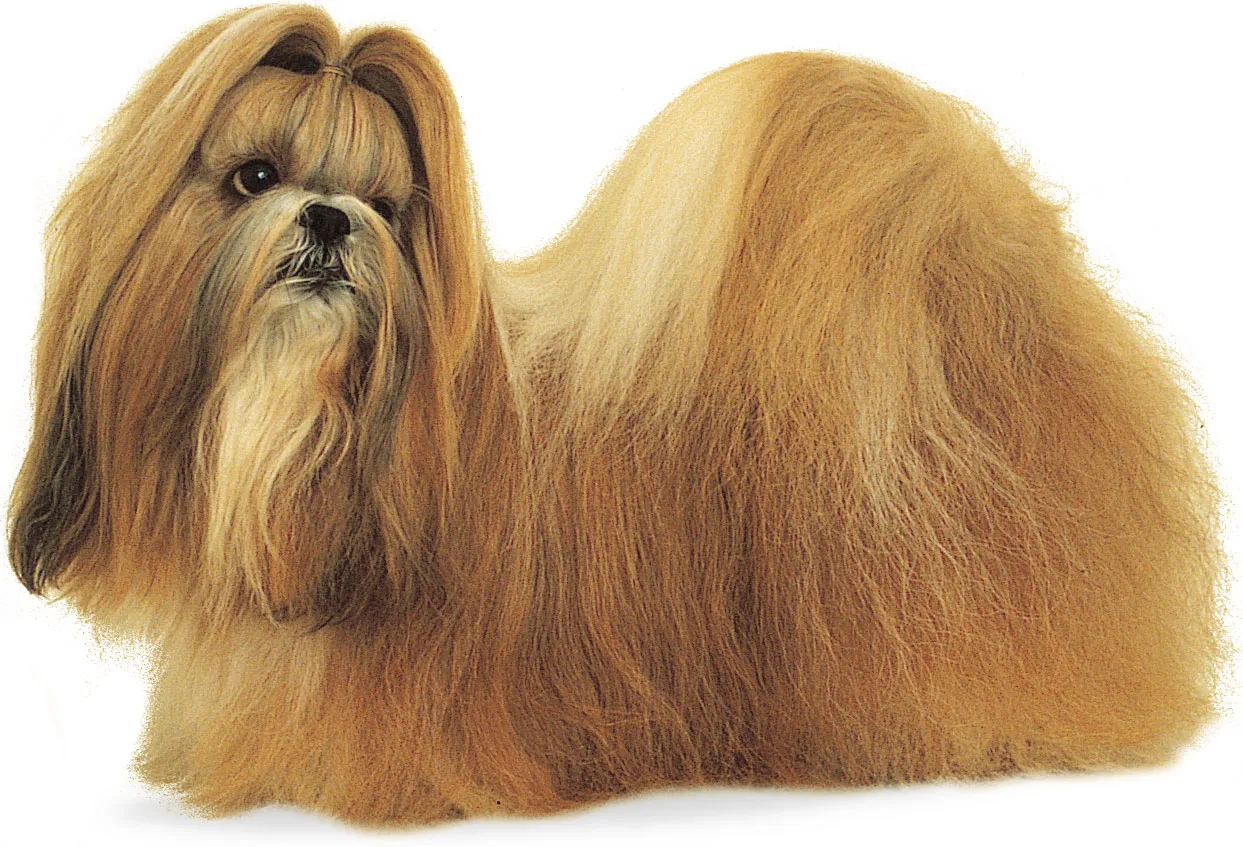
You Didn’t Know You Needed
Among the myriad of adorable dog breeds, there’s one that consistently captures hearts with its charm, playfulness, and irresistibly unique appearance—the Chocolate Shih Tzu. If you’re unfamiliar with this precious pooch, get ready to fall in love. Known for their beautiful chocolate-colored coats and affectionate nature, these pups are the perfect combination of sweetness and sass.
For more information regarding 4 seasonal cxcercieses of all dog breeds recommended by the doctors and experts,you can visit our youtube channel:
https://www.youtube.com/@Dogsreaders

This article dives into everything you need to know about the Chocolate Shih Tzu, from their appearance and temperament to their care needs and whether they’re the right fit for your home.
What Is a Chocolate Shih Tzu?
A Chocolate Shih Tzu is a variation of the beloved Shih Tzu breed, known for their unique coat color. While traditional Shih Tzus come in various colors, the chocolate variety stands out due to its warm, brown tones that resemble a bar of rich cocoa. Recessive genes cause this distinct coloration, making it rarer compared to other coat colors.
To qualify as a true chocolate Shih Tzu, the pup must have a liver-colored nose, eye rims, and paw pads that complement their brown coat. Their eyes are often light brown or amber, adding to their striking appearance.

Chocolate Shih Tzu Historical Table and Origin Colors
To better understand the historical significance and origin of Chocolate Shih Tzus, let’s look at the following table:
|
Historical Period |
Origin Colors |
Biological Age |
Compatible Temperature |
|---|---|---|---|
|
Ancient Times |
Various |
10-12 years |
Moderate |
|
Ming Dynasty |
Varied |
12-14 years |
Moderate |
|
Modern Era |
Chocolate |
12-15 years |
Moderate to Warm |
The origin colors of Shih Tzus varied throughout history, but over time, the distinct chocolate variety emerged and gained popularity. With a lifespan of 10 to 15 years, these delightful companions thrive in moderate temperatures, making them adaptable to various climates.

Why Chocolate Shih Tzus Are Loved by Many
There’s more to these little dogs than their enchanting looks. Their personality and demeanor are equally captivating, making them a favorite among pet lovers. Here’s why Chocolate Shih Tzus have stolen so many hearts:
1. Unwavering Affection
Chocolate Shih Tzus are known for being incredibly loyal and loving companions. They thrive on human interaction and enjoy spending time with their families, whether it’s cuddling on the couch or following you around the house. If you’re someone who enjoys having a four-legged shadow, a Chocolate Shih Tzu will not disappoint.
2. Playful Yet Gentle
Despite their small size, these pups have a big personality. They love to play and often display an endearing mix of curiosity and spunk. At the same time, they’re gentle and patient, making them great pets for families with children.
3. Low Barking Tendency
Unlike some smaller breeds, Chocolate Shih Tzus are not excessive barkers. They might alert you to someone at the door but are generally calm and well-mannered, making them a great choice for apartment living.

4. Unique Aesthetic Appeal
Their chocolate-colored coat sets them apart from other Shih Tzus, making them a showstopper wherever they go. Combined with their signature flowing coat and expressive eyes, they are undeniably one of the most photogenic dog breeds.
Caring for a Chocolate Shih Tzu
Like any pet, Chocolate Shih Tzus require proper care and attention to ensure they remain happy and healthy. Here are some important considerations:
3. Health Care and Common Diseases
Regular veterinary check-ups are essential to ensure the well-being of your Chocolate Shih Tzu. They may be prone to certain health conditions, including:
- Brachycephalic Airway Syndrome: Due to their flat faces, Chocolate Shih Tzus can experience breathing difficulties. Regular monitoring and veterinary guidance can help manage this condition.
- Eye Problems: Shih Tzus are susceptible to various eye issues, such as corneal ulcers, dry eye, and progressive retinal atrophy. Routine eye examinations and proper eye care are crucial.
- Dental Disease: Small breeds like the Chocolate Shih Tzu are prone to dental problems. Regular teeth brushing and professional dental cleanings are necessary to maintain good oral health.
- Allergies: Some Chocolate Shih Tzus may develop allergies, which can manifest as skin irritations or respiratory issues. Identifying and managing triggers, along with veterinary guidance, is important.

For any health concerns or questions, consult a veterinarian, who can provide expert guidance and assistance in ensuring the well-being of your beloved Chocolate Shih Tzu.
3. Regular Veterinary Check-ups
Routine veterinary check-ups are crucial for the health and well-being of your Chocolate Shih Tzu. Make sure to schedule regular appointments with a trusted veterinarian, who can provide comprehensive care for your furry friend. Here are some government veterinarian resources to help you find a reliable veterinary clinic near you:
- United States
- United Kingdom
- Australia
- Canada
- By staying proactive with regular veterinary check-ups, you can ensure your beloved Chocolate Shih Tzu receives the necessary care and attention to live a healthy and happy life.
1. Grooming Needs
Their long, silky coat is stunning, but it comes with grooming responsibilities. Regular brushing (at least 3–4 times a week) helps prevent tangles and mats. Many owners opt for a “puppy cut” to reduce maintenance. Regular baths, nail trims, and ear cleaning are also essential.
2. Nutrition
A balanced diet is key to maintaining their luscious coat and overall health. High-quality dog food formulated for small breeds works best. Avoid overfeeding, as Shih Tzus are prone to weight gain, which can lead to health problems.
3. Exercise Requirements
Although they don’t need extensive exercise, Chocolate Shih Tzus benefit from daily walks and playtime to keep them active. About 30 minutes of activity a day is usually sufficient.

4. Health Considerations
While generally healthy, Shih Tzus can be predisposed to certain genetic conditions, including:
- Brachycephalic Syndrome due to their flat faces, which can cause breathing difficulties in hot or humid weather.
- Eye problems, such as cataracts or progressive retinal atrophy.
- Skin Allergies, which require proper skincare and regular vet check-ups.
5. Training and Socialization
Chocolate Shih Tzus are intelligent and trainable, but can be a bit stubborn. Consistent, positive reinforcement training works best. Early socialization helps them adapt to different environments and people.
Is a Chocolate Shih Tzu Right for You?
While Chocolate Shih Tzus are undeniably adorable, it’s important to consider whether they’re the right fit for your lifestyle:
- Space Requirements: Their small size makes them well-suited to apartment living, but they still need a cozy and secure space.
- Time Commitment: With their grooming needs and love of attention, they’re ideal for owners who can dedicate time to their care and companionship.
- Family Life: They’re great with kids and seniors alike, making them a versatile addition to most households.
If you’re looking for a loyal, affectionate companion that doubles as a conversation starter wherever you go, a Chocolate Shih Tzu might be the perfect addition to your life.

Where to Find a Chocolate Shih Tzu
If you’ve decided that a Chocolate Shih Tzu is the pup of your dreams, ensure you look for a responsible breeder who prioritizes the health and well-being of their dogs. Avoid puppy mills or backyard breeders. Alternatively, check shelters and rescue organizations—you might just find your perfect furry friend waiting for a second chance.
Latest Research on Chocolate Shih Tzus for Their Betterment
As the popularity of Chocolate Shih Tzus continues to grow, ongoing research and studies are being conducted to ensure their well-being and betterment. Researchers focus on various aspects of their health, behavior, and genetics to provide valuable insights for breeders and owners. These studies aim to enhance the breed’s quality of life and address potential health concerns. Stay updated with the latest research findings to ensure you stay informed about the best practices for raising a healthy and happy Chocolate Shih Tzu.
For more information, you can refer to the following reliable sources:
- The American Shih Tzu Club
- The Canine Health Information Center
- The Shih Tzu Fanciers of America
- Remember, staying informed and educated is crucial for providing the best care for your beloved Chocolate Shih Tzu.

Chocolate Shih Tzu Recommended Books 📚
Expand your knowledge and deepen your understanding of chocolate Shih Tzus with these highly recommended books:
- “The Complete Guide to Chocolate Shih Tzus” by Shih Tzu Experts
- Get comprehensive insights into the history, traits, and care requirements of chocolate Shih Tzus. This guide covers everything from grooming tips to training techniques, making it an essential resource for both new and experienced Shih Tzu owners.
- “Chocolate Shih Tzus: Their Unique Personality and Behavior” by Canine Behavioral Specialist
- Dive into the world of chocolate Shih Tzus and explore their distinct personality traits and behavior patterns. Gain valuable insights into their temperament, socialization needs, and effective training methods to ensure a harmonious relationship with your furry friend.
- “The Art of Chocolate Shih Tzu Photography” by Professional Pet Photographer
- Capture the beauty and charm of your chocolate Shih Tzu through the lens with this guide to pet photography. Learn useful tips and techniques for capturing stunning portraits, playful candid shots, and adorable moments that showcase the unique personality of your beloved companion.
Immerse yourself in these captivating reads to discover more about the delightful world of chocolate Shih Tzus. Happy reading! 🐾📖
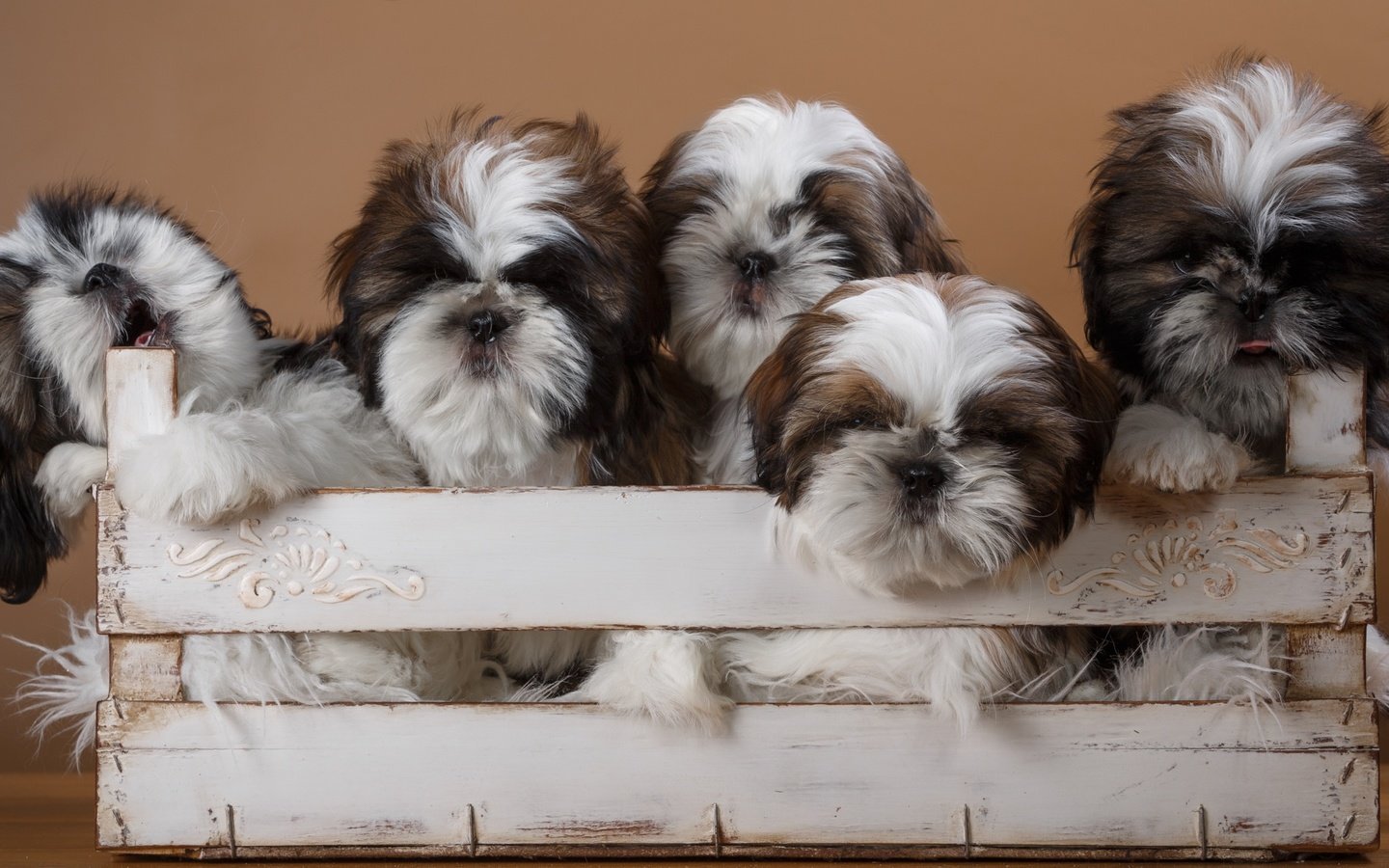
VI. Frequently Asked Questions (FAQs)
Q1: How much should I save for long-term goals?
- The amount you should save depends on your specific financial goals, such as retirement, education, or major purchases. A general rule of thumb is to save at least 10-20% of your income, but it’s important to assess your individual circumstances and create a personalized savings plan.
Q2: Can I access my long-term savings in case of emergencies?
- While long-term savings are typically intended for future goals, it’s wise to have an emergency fund separate from your long-term savings. This fund should cover 3-6 months’ worth of living expenses to provide a safety net during unexpected circumstances.
Q3: What are some effective ways to stay motivated to save long-term?
- Set clear and specific financial goals, track your progress, and celebrate milestones along the way. Automate your savings by setting up automatic transfers to a separate savings account. Additionally, surround yourself with a supportive community or seek guidance from financial advisors to stay motivated and accountable.

Q4: Is it better to save or invest for long-term goals?
- Saving and investing go hand in hand for long-term goals. Saving provides a foundation of financial stability and liquidity, while investing offers the potential for higher returns. Striking the right balance between saving and investing depends on your risk tolerance, time horizon, and financial objectives.
Q5: What if I have debt? Should I focus on paying it off or saving for the long term?
- It’s generally advisable to strike a balance between debt repayment and long-term saving. High-interest debt should be a priority, as it can hinder your financial progress. However, it’s also important to continue saving for long-term goals, even if it’s a smaller amount. Consider creating a plan that addresses both debt repayment and long-term savings simultaneously.
Remember, these answers provide general guidance. It’s recommended to consult with a financial advisor to assess your unique circumstances and develop a tailored approach to long-term saving.

SMALL DOG BREEDS
”Choosing the Right Dog Breed: for Your Lifestyle”
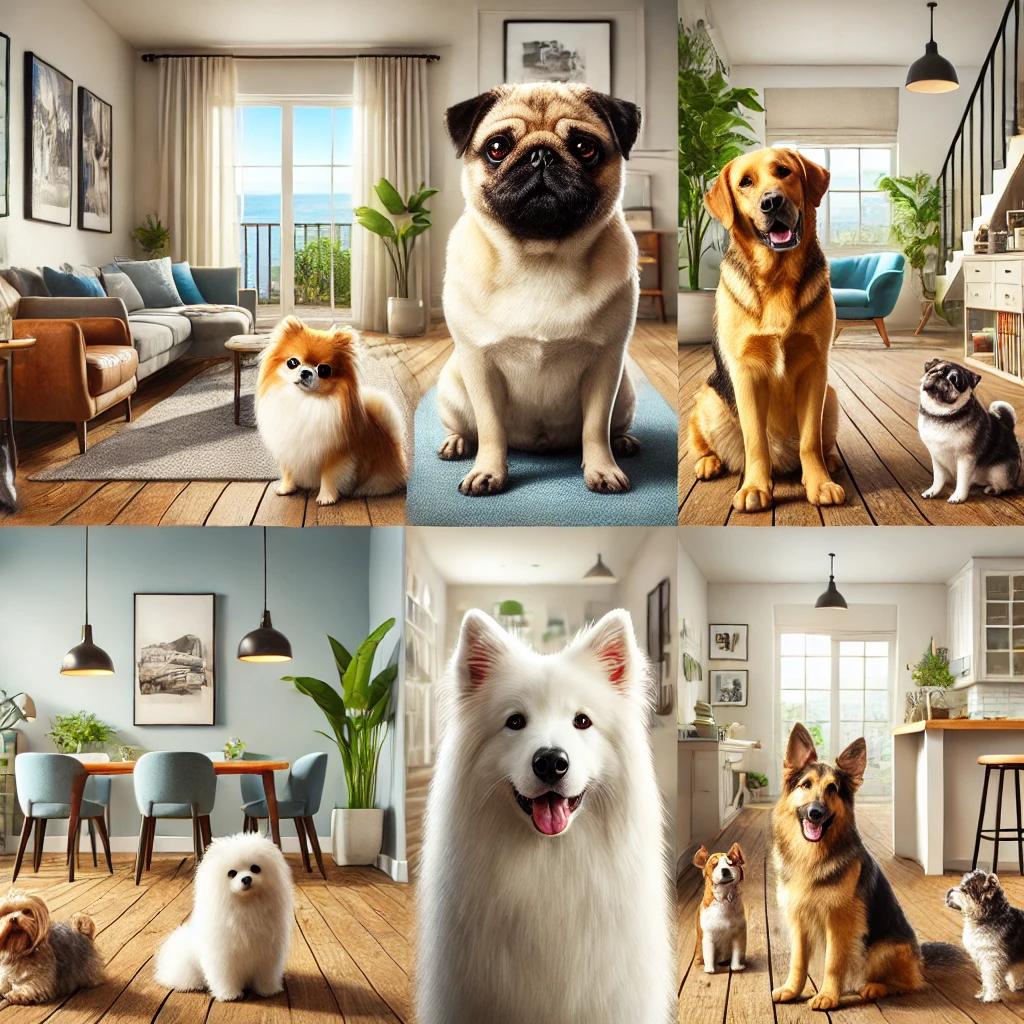
A Very Important Part of Choosing the Right Companion

Choosing the right dog breed is a crucial decision that affects both the owner and the dog. With hundreds of breeds available, selecting the best match for your lifestyle ensures a happy and healthy relationship. Whether you are looking for a high-energy companion or a low-maintenance pet, considering factors like living space, activity level, and personal preferences is essential.
For more information regarding 4 seasonal cxcercieses of all dog breeds recommended by the doctors and experts,you can visit our youtube channel:
Selecting the right dog breed is essential for ensuring a harmonious relationship between you and your pet. Your lifestyle, living space, and financial capacity all play a significant role in determining which breed suits you best. Whether you are a job holder, a businessperson, a student, or a homemaker, there is a perfect breed for everyone. This guide will help you make the best choice based on your financial position and daily routine.
Factors to Consider When Choosing a Dog Breed

1. Size and Living Space
The size of a dog significantly impacts its adaptability to different living environments.
- Small Breeds ( Chihuahua, French Bulldog, Pomeranian) – Ideal for apartments and small homes.
- Medium Breeds ( Border Collie, Cocker Spaniel, Beagle) – Suitable for both small homes and larger spaces.
- Large Breeds ( Labrador Retriever, Golden Retriever, German Shepherd) – Require more space, best suited for homes with yards.
2. Activity Level and Energy Requirements
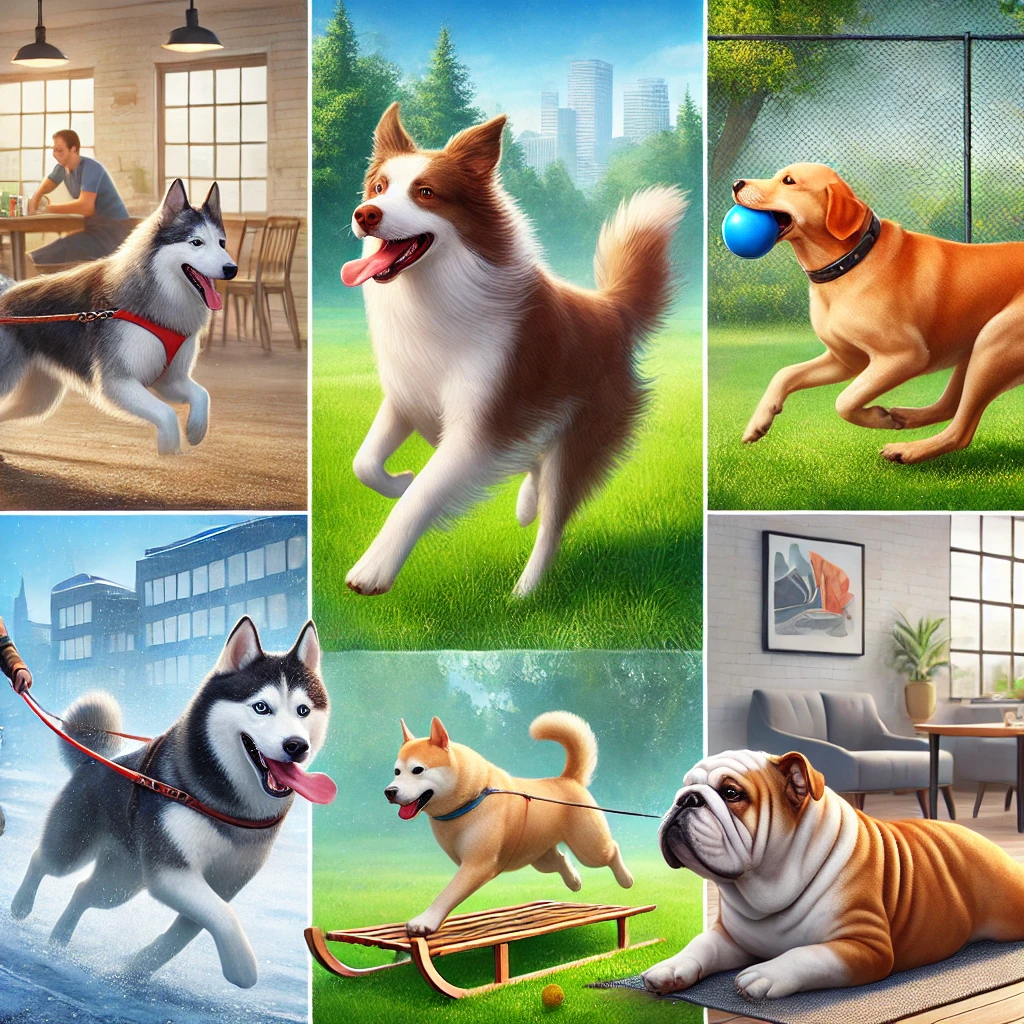
Some breeds require intense physical activity, while others are content with minimal exercise.
- High-Energy Dogs ( Siberian Husky, Australian Shepherd, Dalmatian) – Perfect for active individuals or families who enjoy outdoor activities.
- Moderate-Energy Dogs ( Boxer, Bulldog, Corgi) – Need regular exercise but adapt well to moderate activity levels.
- Low-Energy Dogs ( Basset Hound, Shih Tzu, Pug) – Best for those with a less active lifestyle or limited mobility.
3. Grooming and Maintenance Needs
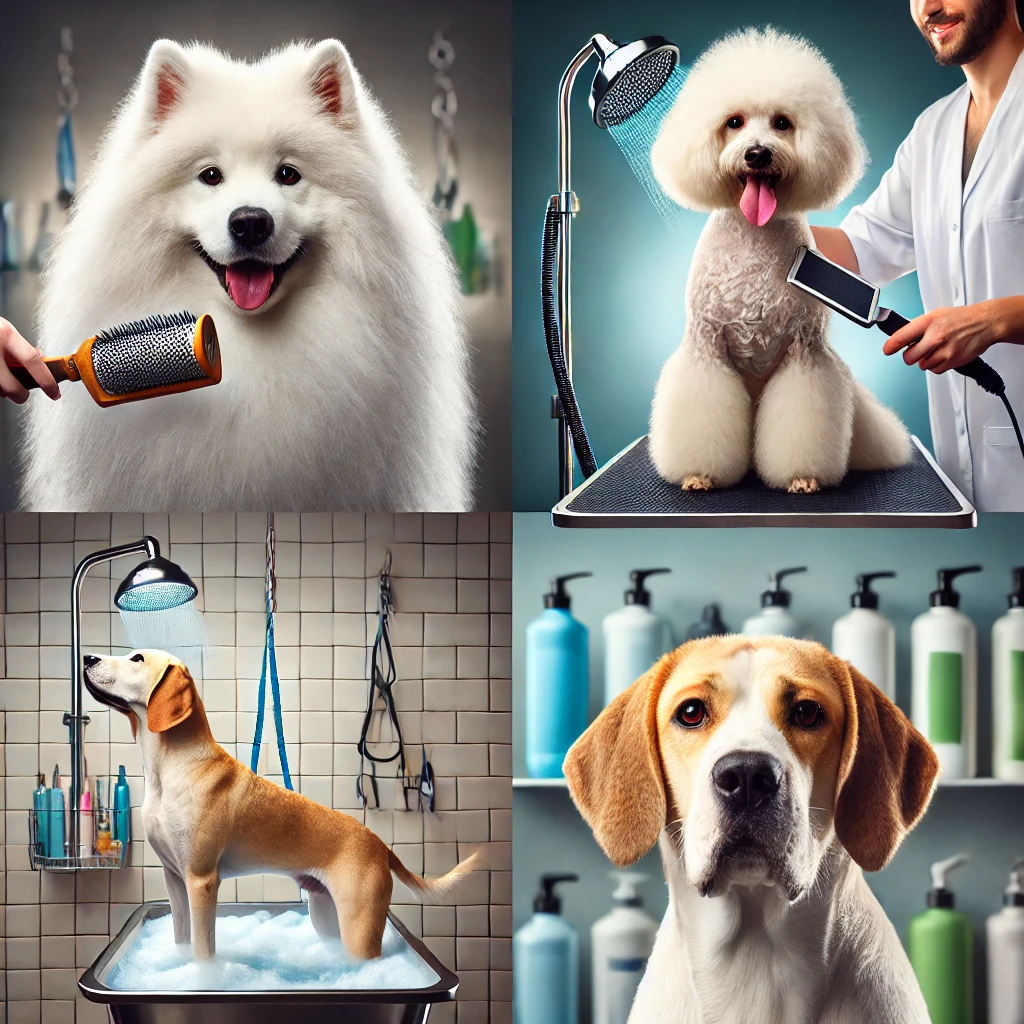
Different breeds have varied grooming requirements based on coat type.
- Low Maintenance ( Beagle, Doberman, Boxer) – Minimal grooming required.
- Moderate Maintenance (Golden Retriever, Cocker Spaniel, Border Collie) – Regular brushing and occasional grooming.
- High Maintenance (Poodle, Afghan Hound, Shih Tzu) – Require frequent grooming and coat care.
4. Temperament and Family Compatibility
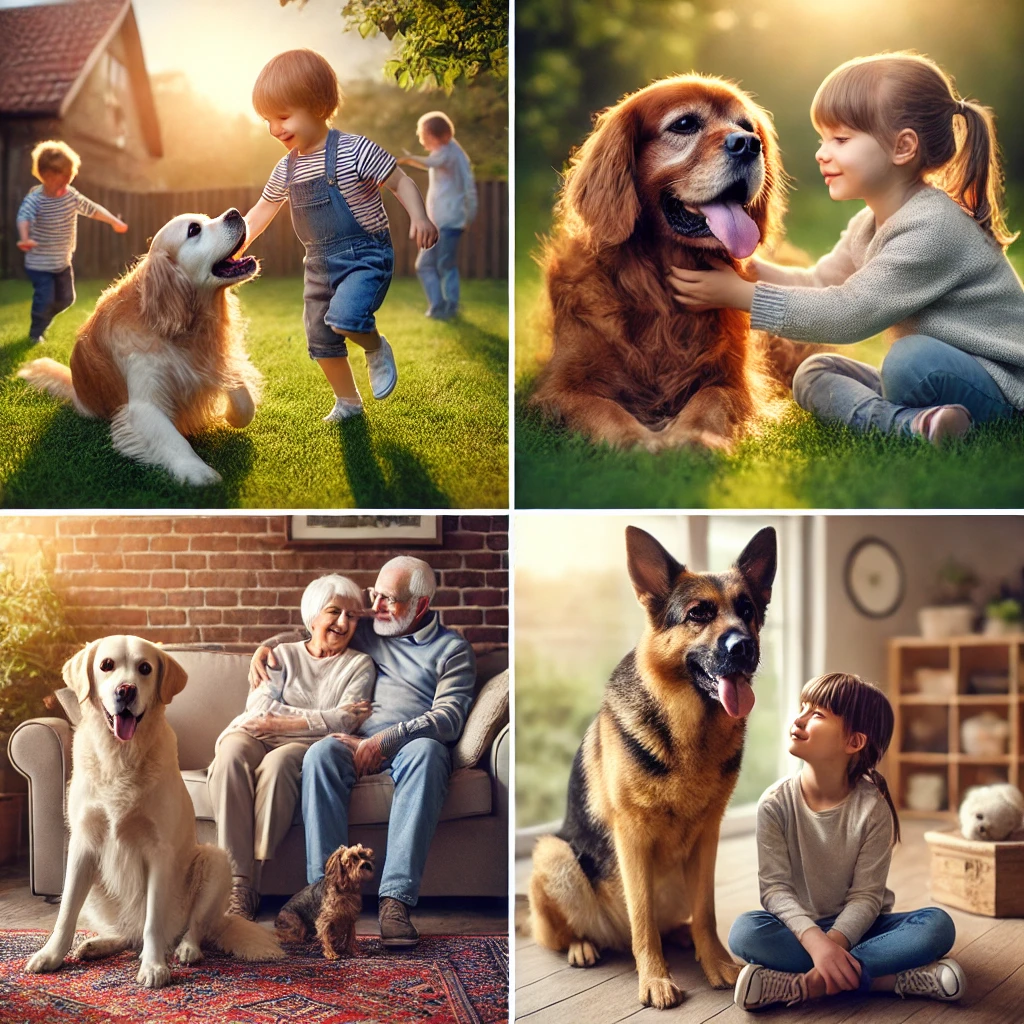
Understanding a breed’s temperament helps in choosing a dog that fits well with your household.
-
Great with Families (Labrador Retriever, Golden Retriever, Collie) – Friendly, affectionate, and good with children.
-
Independent Breeds ( Akita, Afghan Hound, Chow Chow) – Require experienced handling and training.
-
Protective Breeds ( Rottweiler, German Shepherd, Doberman) – Naturally alert and good for home security.
5. Trainability and Intelligence
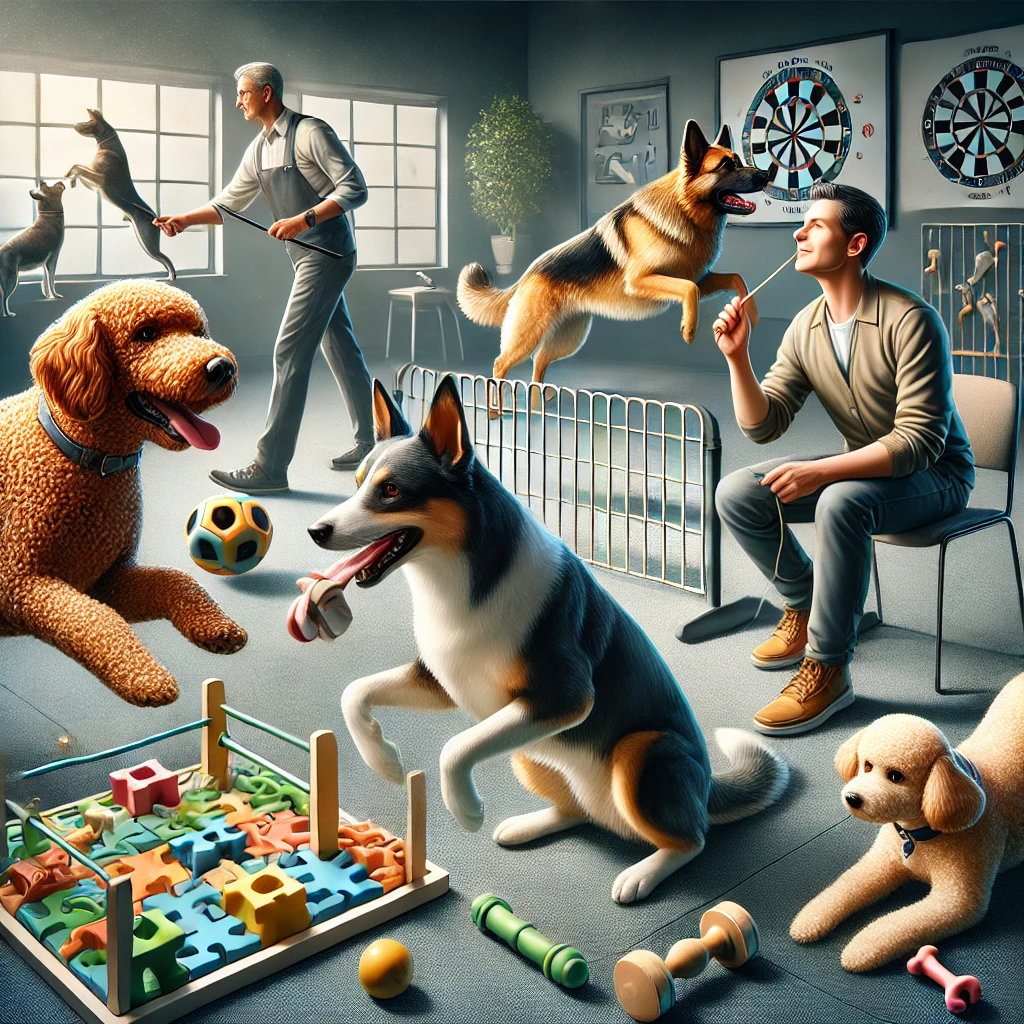
Some breeds are more eager to learn and easier to train than others.
-
Highly Trainable ( Border Collie, Poodle, German Shepherd) – Quick learners and excel in obedience training.
-
Moderately Trainable ( Beagle, Bulldog, Shiba Inu) – Can learn commands but may require patience.
-
Independent Thinkers (Afghan Hound, Basenji, Chow Chow) – Less eager to please, requiring consistent training.
Matching a Dog Breed to Your Lifestyle

For Active Individuals and Outdoor Enthusiasts
If you enjoy hiking, running, or outdoor adventures, consider breeds with high stamina and endurance.
-
Best choices: Siberian Husky, Border Collie, Labrador Retriever, Dalmatian
For Apartment Dwellers and City Living

Breeds that adapt well to small spaces and don’t require excessive exercise are ideal.
-
Best choices: French Bulldog, Cavalier King Charles Spaniel, Dachshund, Pug
For Families with Children
A family-friendly dog should be gentle, patient, and enjoy interaction.
-
Best choices: Golden Retriever, Labrador Retriever, Beagle, Boxer
For First-Time Dog Owners
Some breeds are easier to handle and more forgiving of training mistakes.
-
Best choices: Cavalier King Charles Spaniel, Labrador Retriever, Poodle, Bichon Frise
For Seniors or Low-Activity Owners

A low-energy, affectionate breed is best for companionship.
-
Best choices: Shih Tzu, Pomeranian, Basset Hound, Maltese
For Allergy Sufferers
Hypoallergenic breeds shed less and produce fewer allergens.
-
Best choices: Poodle, Schnauzer, Maltese, Portuguese Water Dog
Choosing the Right Dog Breed for Your Lifestyle
Selecting the right dog breed is essential for ensuring a harmonious relationship between you and your pet. Your lifestyle, living space, and financial capacity all play a significant role in determining which breed suits you best. Whether you are a job holder, a businessperson, a student, or a homemaker, there is a perfect breed for everyone. This guide will help you make the best choice based on your financial position and daily routine.
1. Job Holders Living in Apartments (Limited Salary)
For individuals working 9-to-5 jobs with limited salaries and living in apartments, a small breed is the best option. These dogs require minimal space, have lower food costs, and are easy to manage.
Best Breeds:
- Pug – Friendly, adaptable, and requires moderate exercise.
- French Bulldog – Low maintenance, affectionate, and apartment-friendly.
- Shih Tzu – Great for small spaces, but requires regular grooming.
- Chihuahua – Low feeding costs, small size, and minimal exercise needs.
2. Businessmen (High-Income & Large Living Spaces)

Businesspersons who have larger living spaces and a higher budget can afford to own bigger or more luxurious dog breeds. These dogs often require more space, food, and maintenance.
Best Breeds:
- Golden Retriever – Highly trainable, loving, and great with families.
- Labrador Retriever – Active, intelligent, and a great companion.
- Doberman Pinscher – Excellent guard dog, loyal, and protective.
- German Shepherd – Highly trainable, protective, and versatile.
- Siberian Husky – Requires large space and regular exercise; ideal for active owners.
3. Female Job Holders (Limited Salary & Apartment Living)

For working women who live in apartments, a low-maintenance dog that does not require extensive training or exercise is ideal.
Best Breeds:
- Maltese – Small, affectionate, and requires little space.
- Pomeranian – Active indoors, does not need large outdoor space.
- Cavalier King Charles Spaniel – Gentle, good-natured, and easy to manage.
- Miniature Schnauzer – Low shedding and apartment-friendly.
4. Female Businesswomen (High-Income & Large Homes)
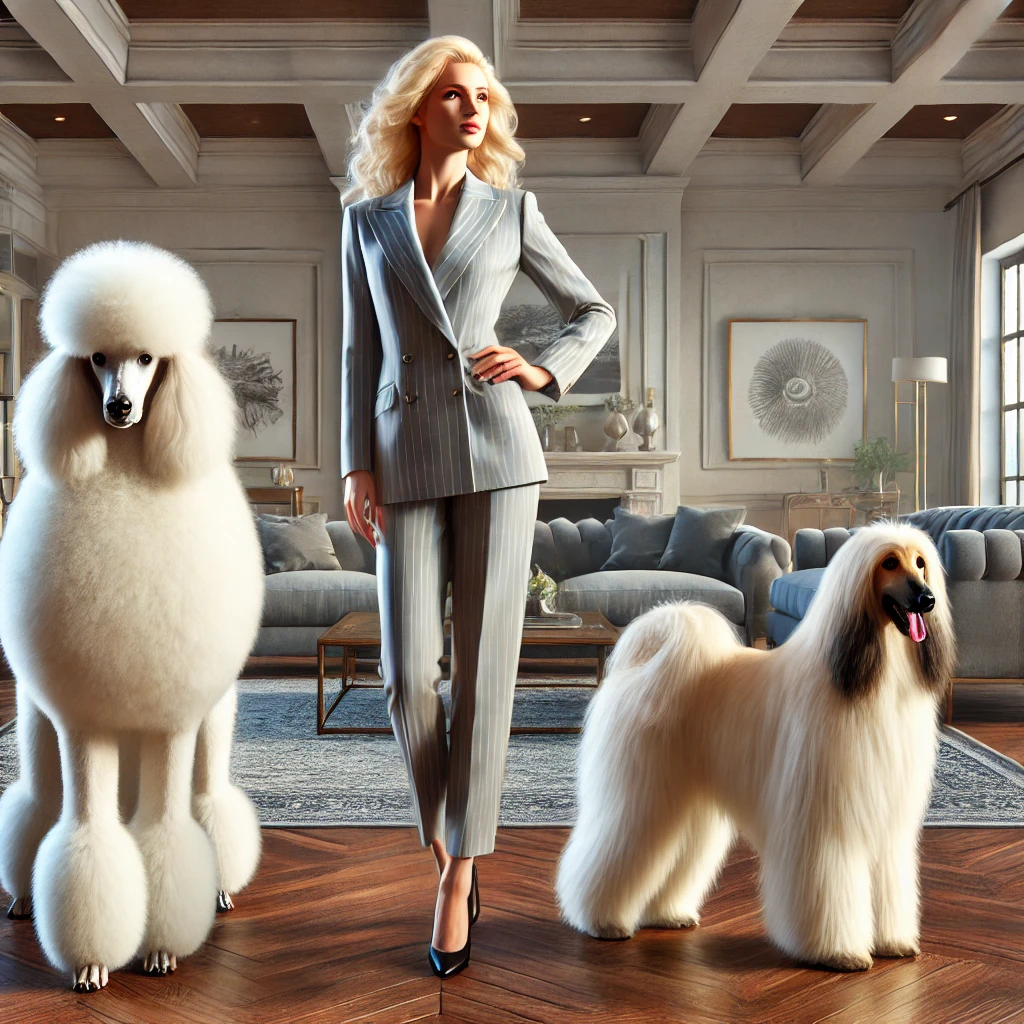
Women who run businesses and have a high budget can opt for luxury breeds that require proper maintenance and space.
Best Breeds:
- Poodle (Standard or Toy) – Elegant, intelligent, and hypoallergenic.
- Samoyed – Beautiful, affectionate, and needs regular grooming.
- Great Dane – Majestic, affectionate, and requires ample space.
- Afghan Hound – Stylish, independent, and requires grooming.
5. Homemakers (Stay-at-Home Ladies)

Housewives with time to take care of their pets can opt for affectionate and family-friendly breeds that require attention but fit well within a household setting.
Best Breeds:
- Beagle – Loyal, friendly, and great with children.
- Cocker Spaniel – Playful, affectionate, and family-oriented.
- Bichon Frise – Cheerful, hypoallergenic, and a great indoor companion.
- Shetland Sheepdog – Smart, obedient, and loves attention.
6. Students (Limited Budget & Space)
Students living in hostels or small apartments with limited budgets need breeds that are low-maintenance, small in size, and require minimal grooming.
Best Breeds:
- Dachshund – Compact, playful, and easy to maintain.
- Jack Russell Terrier – Energetic but does well in small spaces.
- Yorkshire Terrier – Low feeding costs, small size, and affectionate.
- Miniature Pinscher – Low-maintenance, playful, and independent.
7. College & University Students (Moderate Budget)
University students who have moderate budgets and are living in rented apartments need friendly and trainable dogs that adapt well to their routine.
Best Breeds:
- Border Collie – Intelligent and easy to train.
- Australian Shepherd – Active and good for those who love outdoor activities.
- Corgi – Social, adaptable, and compact.
- Boston Terrier – Smart, playful, and great for small apartments.
FAQs: Choosing the Right Dog Breed for Your Lifestyle
Selecting the perfect dog breed involves more than just falling for a cute face—it’s about matching energy levels, space requirements, and personality to your daily life. Below are the most common questions (and answers!) to help you find your ideal canine companion.
1. How Do I Know Which Dog Breed Is Right for Me?
Consider these factors:
Activity Level – Do you want a jogging buddy or a couch potato?
Living Space – Apartment-friendly vs. large-yard-needed breeds.
Grooming Commitment – High-maintenance coats vs. low-shedding breeds.
Time Availability – Some breeds need constant companionship; others are more independent.
Family Needs – Kid-friendly, hypoallergenic, or good with other pets?
Tip: Take online breed quizzes (AKC, Petfinder) for personalized suggestions.
2. What Are the Best Dog Breeds for Apartment Living?
Smaller, quieter, and lower-energy breeds tend to thrive in apartments:
- French Bulldog
- Cavalier King Charles Spaniel
- Shih Tzu
- Greyhound (surprisingly lazy indoors!)
- Boston Terrier
Avoid: Extremely vocal (Beagles) or high-energy breeds (Border Collies) unless you can provide ample exercise.
3. Which Breeds Are Best for Active Owners?
If you love hiking, running, or outdoor adventures, consider:
- Australian Shepherd
- Labrador Retriever
- Siberian Husky
- Vizsla
- Jack Russell Terrier
Warning: These breeds can become destructive if under-exercised!
4. What Are the Best Low-Maintenance Dog Breeds?
For minimal grooming and moderate energy:
- Chihuahua (short-haired)
- Dachshund
- Whippet
- Basenji (self-cleaning, like a cat!)
- Rat Terrier
Note: “Low-maintenance” doesn’t mean zero effort—all dogs need love, training, and vet care.
5. Which Breeds Are Best for Families with Kids?
Look for patient, gentle, and sturdy breeds:
- Golden Retriever
- Labrador Retriever
- Beagle
- Boxer
- Newfoundland (gentle giants!)
Avoid: Fragile toy breeds (e.g., Italian Greyhounds) or aggressive guard dogs if you have small children.
6. What Are the Best Hypoallergenic Dog Breeds?
For allergy sufferers, consider low-shedding breeds:
- Poodle (all sizes)
- Bichon Frise
- Portuguese Water Dog
- Schnauzer
- Maltese
Myth Buster: No dog is 100% hypoallergenic, but these produce less dander.
7. Should I Get a Puppy or an Adult Dog?
| Puppy | Adult Dog |
|---|---|
| Requires training (potty, obedience) | Often already trained |
| High energy, needs socialization | Calmer, established personality |
| Longer time commitment | May adapt quicker to your routine |
| Cute but destructive phase | Known behavior traits |
Best for first-time owners? Many recommend adopting an adult dog for an easier transition.
8. How Do I Find a Reputable Breeder vs. Adopting?
Reputable Breeder:
- Health-tests parents, provides AKC papers, allows meet-ups.
- Avoids “puppy mills” (red flag: multiple litters always available).
Adoption:
- Shelters and rescues often have mixed breeds (healthier genetic diversity!).
- Adult dogs’ personalities are already known.
Ethical Choice: Consider breed-specific rescues if you want a purebred without supporting breeding mills.
9. What If I Fall in Love with a Breed That Doesn’t Fit My Lifestyle?
- Be honest: Can you adjust your routine (more walks, grooming)?
- Compromise: Example: Love Huskies but live in a hot climate? Consider a mutt with Husky looks but less demanding needs.
- Foster First – Try before committing!
10. Where Can I Research Breed Temperaments & Health Issues?
Trusted Resources:
- AKC.org (Breed profiles)
- Your local vet (Breed-specific advice)
- Dog forums (Real-owner experiences)
- Meet the breed – Visit dog shows or breed meetups.
Closing Statement
The “perfect” dog is the one whose needs align with your lifestyle. Whether you adopt a playful mutt or a pedigreed pup, the right match means years of happiness for both of you!
Selecting the right dog breed is crucial for a happy and healthy companionship. Whether you are a job holder, a businessperson, a homemaker, or a student, there is a perfect breed to match your lifestyle and financial capability. By considering factors such as living space, budget, and time availability, you can ensure that your furry friend fits seamlessly into your life.
For more expert dog care tips, visit DogsReader and follow us on our social media platforms!
DogsReader – Your Trusted Canine Companion Guide
For more expert insights on dog breeds and pet care, visit DogsReader! Stay connected with us on Facebook and Instagram for the latest updates.
SMALL DOG BREEDS
How Cold is Too Cold for a Dog:
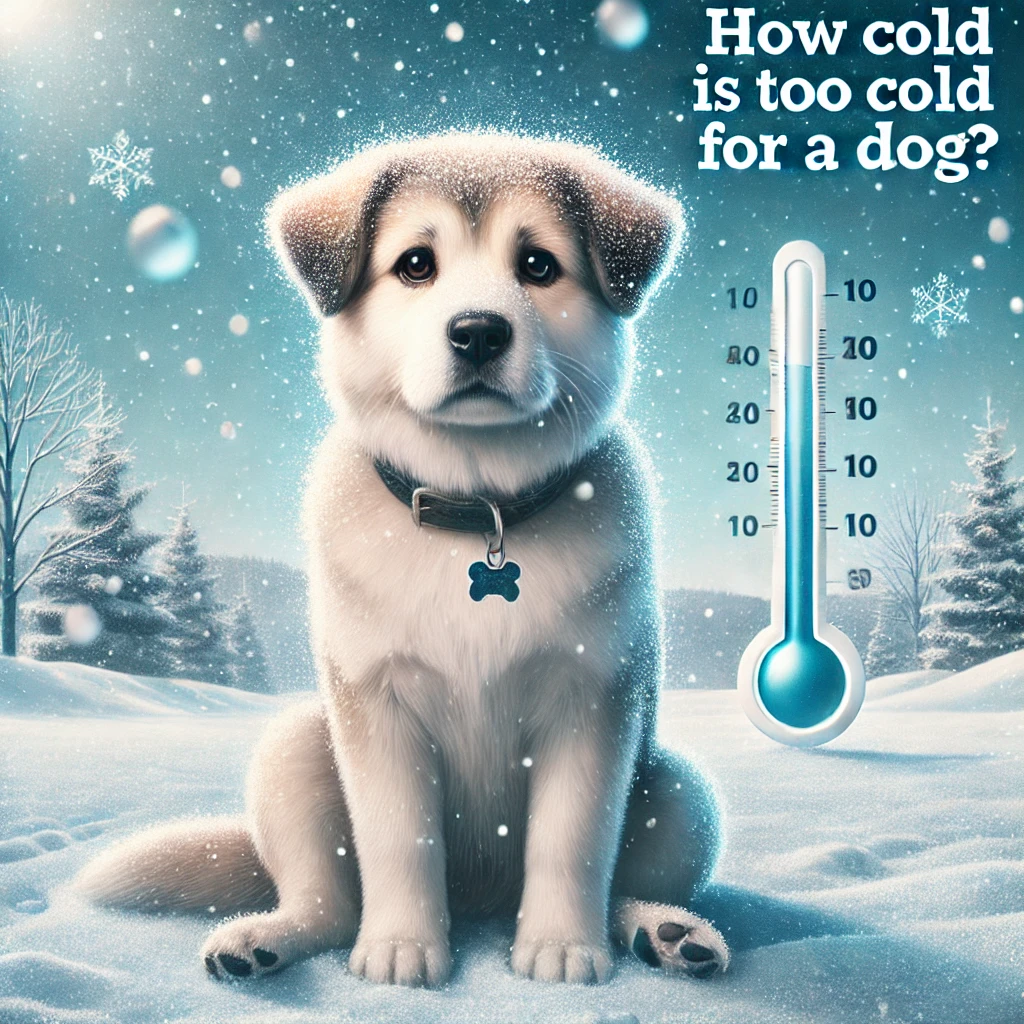
A Comprehensive Guide to Keeping Your Pup Safe in Winter
How Cold is Too Cold for a Dog: As temperatures drop, many dog owners wonder: How cold is too cold for a dog? While some dogs thrive in chilly weather, others are more sensitive to the cold and can suffer from hypothermia, frostbite, or other health issues. Understanding your dog’s tolerance for cold weather is essential to keeping them safe and comfortable during winter. This article covers everything you need to know about cold weather safety for dogs, including breed-specific considerations, signs of cold stress, and tips for protecting your furry friend.
Factors That Determine a Dog’s Cold Tolerance
Not all dogs handle cold weather the same way. Several factors influence how well your dog can tolerate the cold:
- Breed and Size:
- Cold-Weather Breeds:
- Huskies, Malamutes, and Saint Bernards have thick double coats and are built for cold climates.
- Small or Short-Haired Breeds:
- Chihuahuas, Greyhounds, and Dachshunds are more vulnerable to the cold.
- Coat Type:
- Dogs with thick, double-layered coats are better insulated against the cold.
- Short-haired or hairless dogs (e.g., Chinese Crested) need extra protection.
- Age and Health:
- Puppies, senior dogs, and dogs with health conditions (e.g., arthritis) are more sensitive to cold temperatures.
- Acclimatization:
- Dogs accustomed to cold weather handle it better than those used to warmer climates.
How Cold is Too Cold for a Dog?

The answer depends on your dog’s breed, size, and health. Here’s a general guideline:
| Temperature Range | Risk Level | Recommendations |
|---|---|---|
| 45°F (7°C) and above | Low Risk | Most dogs are comfortable. Monitor small or short-haired breeds. |
| 32°F (0°C) to 45°F (7°C) | Moderate Risk | Limit time outdoors. Provide coats for small or short-haired dogs. |
| 20°F (-6°C) to 32°F (0°C) | High Risk | Short walks only. Use protective gear like coats and boots. |
| Below 20°F (-6°C) | Extreme Risk | Avoid prolonged exposure. Frostbite and hypothermia are likely. |
Signs Your Dog is Too Cold
Watch for these signs that your dog is feeling the cold:
- Shivering: The most obvious sign of discomfort.
- Whining or Anxiety: Your dog may want to go inside.
- Slow Movements: Cold can make joints stiff and movement difficult.
- Paw Lifting: Indicates that the ground is too cold for their paws.
- Pale or Gray Gums: A sign of hypothermia or frostbite.
If you notice any of these signs, bring your dog indoors immediately and warm them up gradually.
Breed-Specific Considerations
Different breeds have different cold tolerances:
1. Cold-Weather Breeds (e.g., Siberian Husky, Alaskan Malamute)
- Can handle temperatures as low as -20°F (-29°C).
- Still need monitoring for frostbite on ears and paws.
2. Small or Toy Breeds (e.g., Chihuahua, Toy Poodle)
- At risk in temperatures below 45°F (7°C).
- Require sweaters or coats for outdoor walks.
3. Short-Haired Breeds (e.g., Greyhound, Boxer)
- Vulnerable in temperatures below 32°F (0°C).
- Need protective gear like coats and boots.
4. Senior Dogs and Puppies
- Less able to regulate body temperature.
- Limit outdoor time in cold weather.
How to Protect Your Dog in Cold Weather
- Dress Them Warmly:
-
- Use dog coats or sweaters for small, short-haired, or senior dogs.
- Protect paws with booties to prevent frostbite and exposure to salt or ice melt.
- Limit Outdoor Time:
-
- Shorten walks and avoid prolonged exposure to cold.
- Provide indoor exercise and mental stimulation.
- Create a Warm Space:
-
- Ensure your dog has a warm, draft-free place to sleep indoors.
- Use heated pet beds or blankets for extra warmth.
- Check Paws Regularly:
-
- Wipe paws after walks to remove ice, salt, or chemicals.
- Apply paw balm to prevent cracking and dryness.
- Adjust Their Diet:
-
- Dogs burning extra energy to stay warm may need more calories.
- Consult your vet before making dietary changes.
Dangers of Cold Weather for Dogs
- Hypothermia:
-
- Occurs when a dog’s body temperature drops dangerously low.
- Symptoms include shivering, lethargy, and shallow breathing.
- Frostbite:
-
- Affects extremities like ears, paws, and tails.
- Signs include pale or gray skin, swelling, and blisters.
- Chemical Exposure:
-
- Ice melt and antifreeze are toxic to dogs.
- Rinse your dog’s paws after walks to remove chemicals.
What to Do if Your Dog Gets Too Cold
- Bring Them Indoors: Move your dog to a warm, dry place.
- Wrap Them in Blankets: Use warm (not hot) blankets to raise their body temperature.
- Offer Warm Water: Provide lukewarm water to drink.
- Contact Your Vet: If symptoms of hypothermia or frostbite persist, seek immediate veterinary care.
Closing Statement
Understanding how cold is too cold for your dog is crucial for their safety and comfort during winter. By considering your dog’s breed, size, and health, you can take the necessary steps to protect them from the cold. Whether it’s dressing them in a cozy sweater, limiting outdoor time, or providing a warm indoor space, your dog relies on you to keep them safe during the chilly months. Stay vigilant, watch for signs of cold stress, and enjoy the winter season with your furry friend!
Frequently Asked Questions (FAQs) About Cold Weather Safety for Dogs
Below are detailed answers to common questions about how cold is too cold for dogs and how to keep them safe during winter.
1. How cold is too cold for dogs?
It depends on your dog’s breed, size, and health. Generally:
- 45°F (7°C) and above: Safe for most dogs.
- 32°F (0°C) to 45°F (7°C): Risky for small, short-haired, or senior dogs.
- Below 20°F (-6°C): Dangerous for all dogs; avoid prolonged exposure.
2. Can dogs get hypothermia?
Yes, dogs can develop hypothermia if exposed to cold temperatures for too long. Symptoms include shivering, lethargy, and shallow breathing. Immediate warming and veterinary care are essential.
3. What are the signs that my dog is too cold?
Signs include:
- Shivering
- Whining or anxiety
- Slow movements or stiffness
- Lifting paws off the ground
- Pale or gray gums
4. Do dogs need coats in winter?
Small, short-haired, or senior dogs benefit from coats or sweaters in cold weather. Cold-weather breeds like Huskies usually don’t need extra layers.
5. How can I protect my dog’s paws in winter?
- Use dog booties to protect against cold, ice, and chemicals.
- Apply paw balm to prevent cracking.
- Wipe paws after walks to remove ice, salt, or antifreeze.
6. Can dogs get frostbite?
Yes, frostbite can affect a dog’s ears, paws, and tail. Signs include pale or gray skin, swelling, and blisters. Seek veterinary care if you suspect frostbite.
7. How long can dogs stay outside in the cold?
It depends on the temperature and your dog’s breed:
- Above 45°F (7°C): Most dogs can stay outside for extended periods.
- Below 32°F (0°C): Limit outdoor time to 10-15 minutes.
- Below 20°F (-6°C): Only allow quick bathroom breaks.
8. Are some breeds more cold-tolerant than others?
Yes, cold-weather breeds like Huskies and Malamutes are more cold-tolerant, while small or short-haired breeds like Chihuahuas and Greyhounds are more vulnerable.
9. Can puppies and senior dogs handle the cold?
Puppies and senior dogs are less able to regulate their body temperature and are more sensitive to the cold. Limit their exposure and provide extra warmth.
10. What should I do if my dog gets too cold?
- Bring them indoors immediately.
- Wrap them in warm blankets.
- Offer lukewarm water to drink.
- Contact your vet if symptoms of hypothermia or frostbite persist.
11. Are heated dog beds safe?
Yes, heated dog beds are safe if used correctly. Choose beds with chew-resistant cords and automatic shut-off features.
12. Can dogs sleep outside in winter?
It’s not recommended. Even cold-weather breeds need a warm, dry shelter if they sleep outside. However, it’s safer to bring all dogs indoors during winter.
13. How can I exercise my dog in cold weather?
- Shorten walks and avoid icy or snowy areas.
- Provide indoor exercise like fetch or puzzle toys.
- Visit indoor dog parks or playdates.
14. Are ice melt and antifreeze dangerous for dogs?
Yes, both are toxic. Ice melt can irritate paws, and antifreeze is deadly if ingested. Rinse your dog’s paws after walks and keep antifreeze out of reach.
15. Should I adjust my dog’s diet in winter?
Dogs burning extra energy to stay warm may need more calories. Consult your vet before making dietary changes.
16. Can dogs wear boots in winter?
Yes, boots protect paws from cold, ice, and chemicals. Introduce them gradually to ensure your dog is comfortable.
17. How can I tell if my dog is enjoying the snow?
Signs your dog is enjoying the snow include:
- Playful behavior (running, digging).
- Wagging tail and relaxed body language.
- No signs of shivering or discomfort.
18. What temperature is too cold for small dogs?
Small dogs are at risk in temperatures below 45°F (7°C). Provide coats and limit outdoor time in colder weather.
19. Can dogs get sick from being wet in the cold?
Yes, wet fur loses its insulating properties, increasing the risk of hypothermia. Dry your dog thoroughly after they get wet.
20. How can I create a warm space for my dog indoors?
- Provide a cozy bed in a draft-free area.
- Use blankets or a heated pet bed.
- Keep the room temperature comfortable.
SMALL DOG BREEDS
How to Draw a Dog : Latest
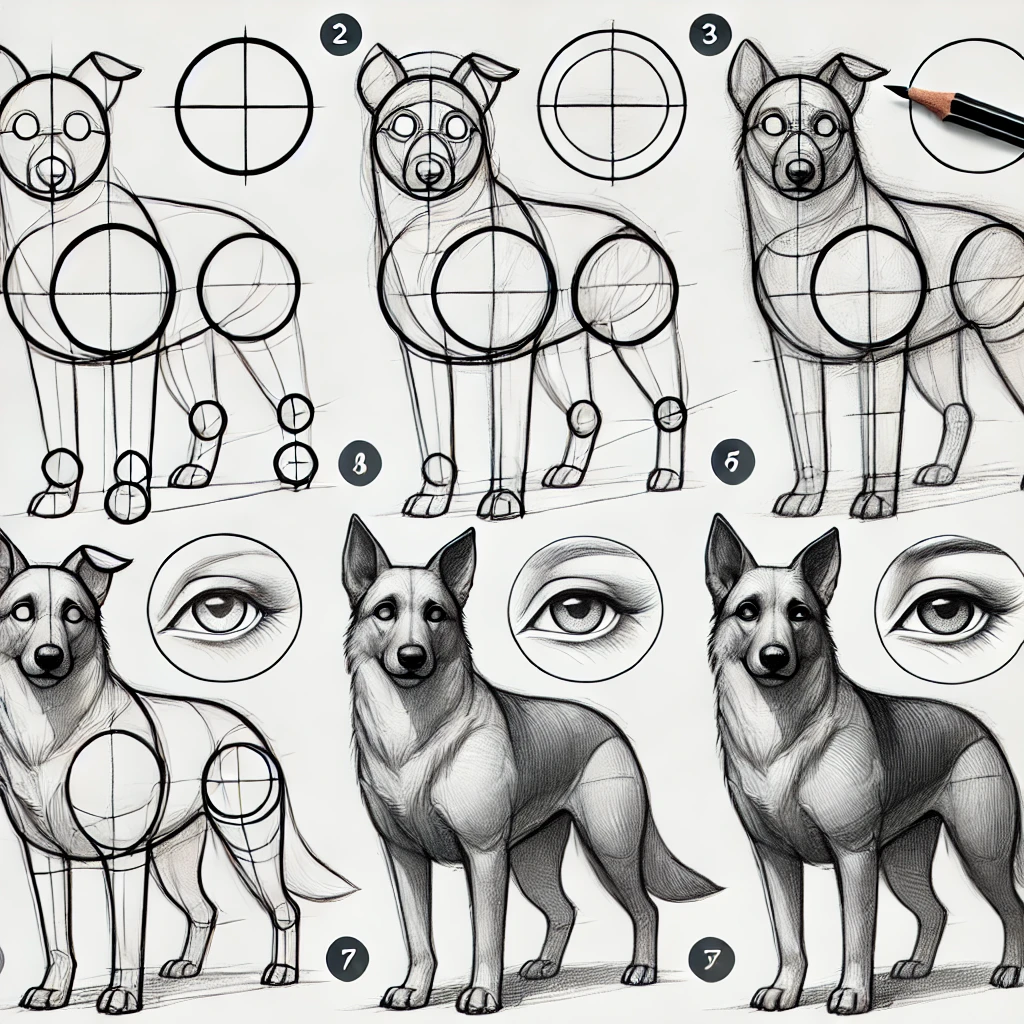
Step-by-Step Guide 🐶✏️
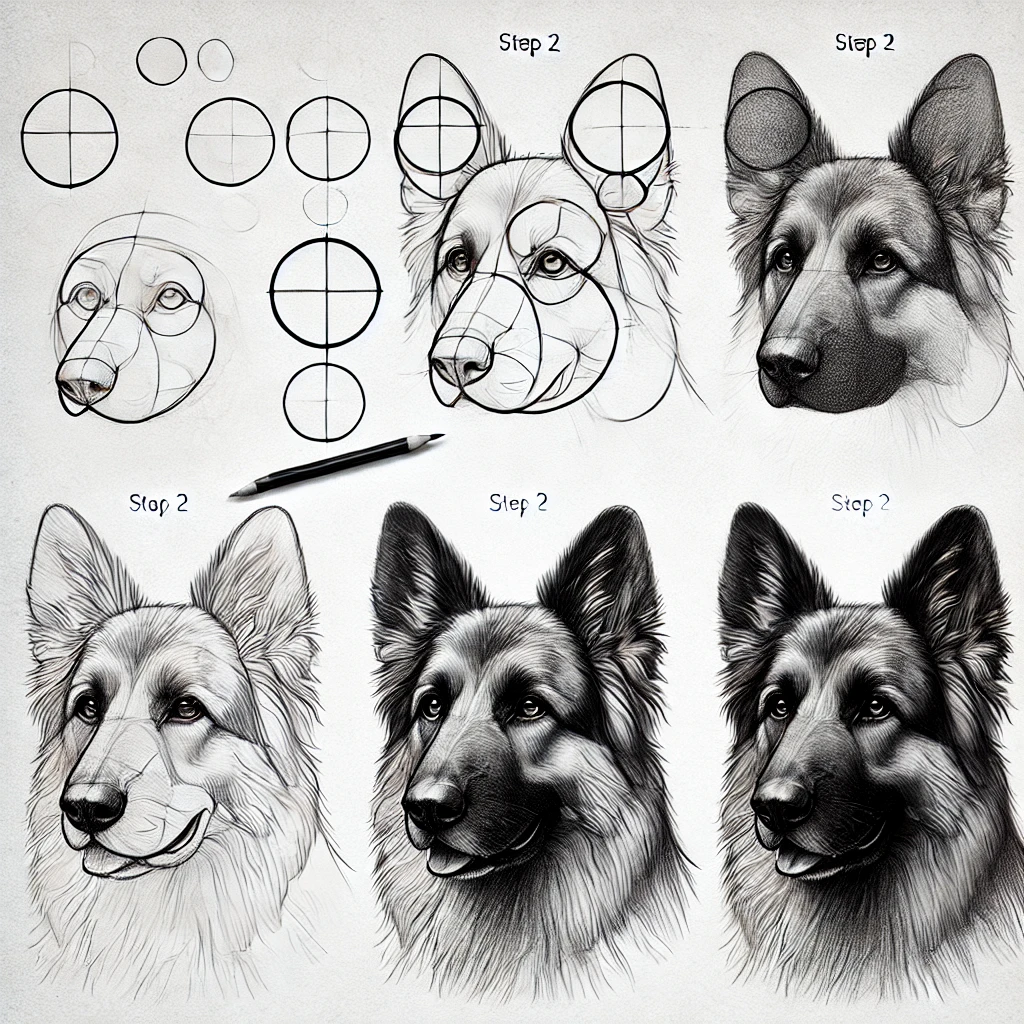

How to Draw a Dog : Latest Drawing a dog is an exciting creative journey. This guide takes inspiration from Wacom’s structured method but adds more artistic depth and realism! You’ll learn to sketch, refine, and create a masterpiece with text + drawing integration. 🎨
For more information regarding 4 seasonal cxcercieses of all dog breeds recommended by the doctors and experts,you can visit our youtube channel:
🖌️ Step 1: Sketching the Basic Framework
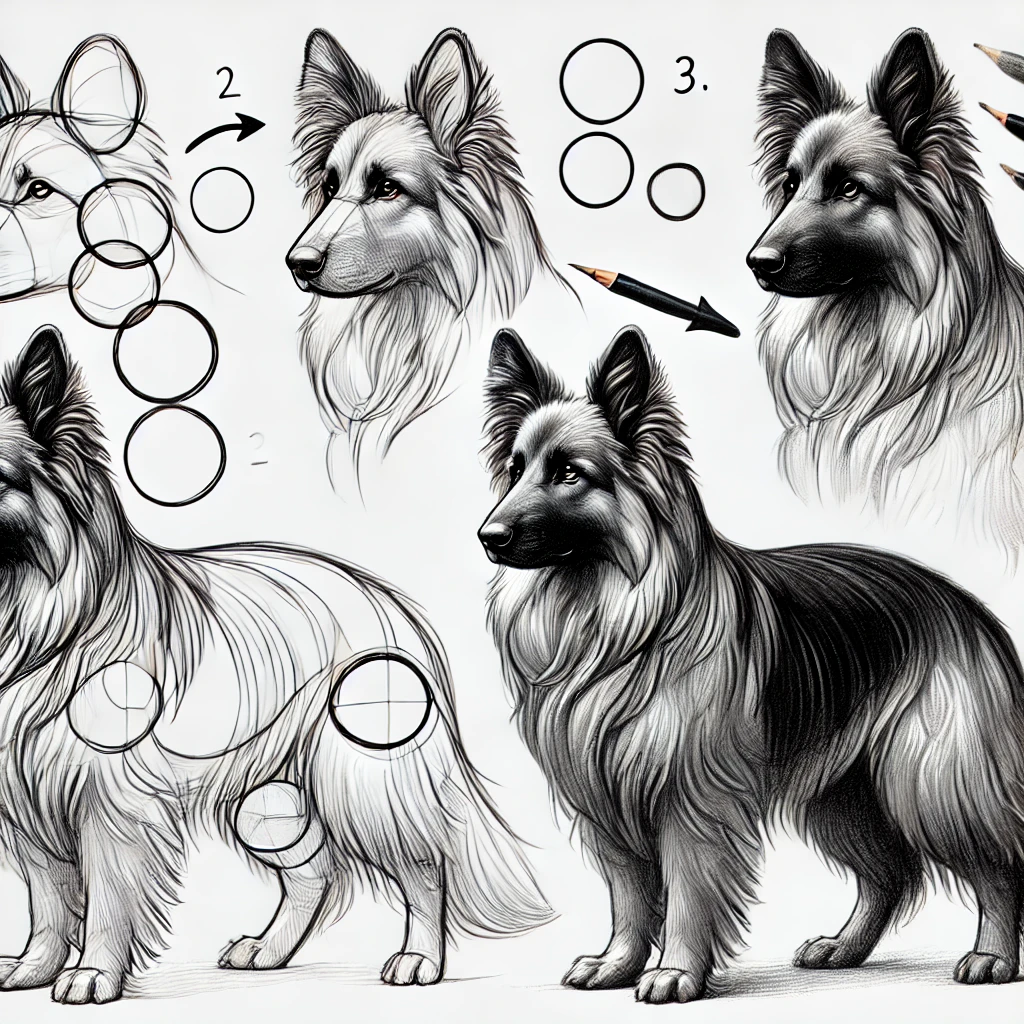
Start with simple geometric shapes to form the structure of the dog:
🟢 Head: Draw a circle for the head. 🟢 Body: Add an oval for the chest and another for the hindquarters. 🟢 Guidelines: Lightly sketch a vertical and horizontal cross in the head circle to map out facial features. 🟢 Legs & Tail: Use cylinder shapes for legs and a curved line for the tail.
➡️ This step is crucial as it lays the foundation! ✏️
✍️ Step 2: Refining the Silhouette
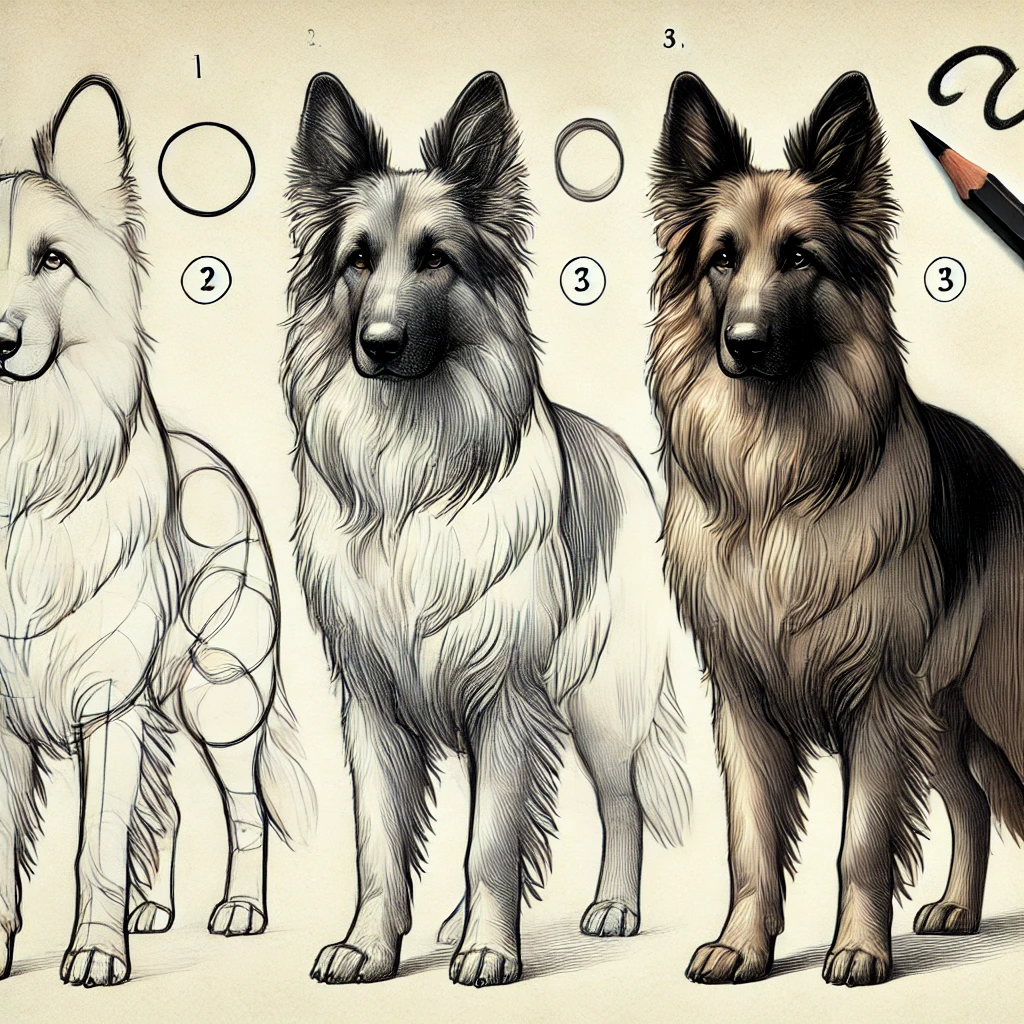
Now, let’s transform those basic shapes into a dog’s actual form:
- Outline the snout and jawline by extending the head circle forward.
- Define the ears (floppy or pointed, depending on the breed).
- Refine the body curves to connect the chest and hind area smoothly.
- Sketch the paws with rounded shapes at the bottom of the legs.
🔍 Tip: Use light strokes so you can erase mistakes easily! 🖊️
👀 Step 3: Facial Features & Details
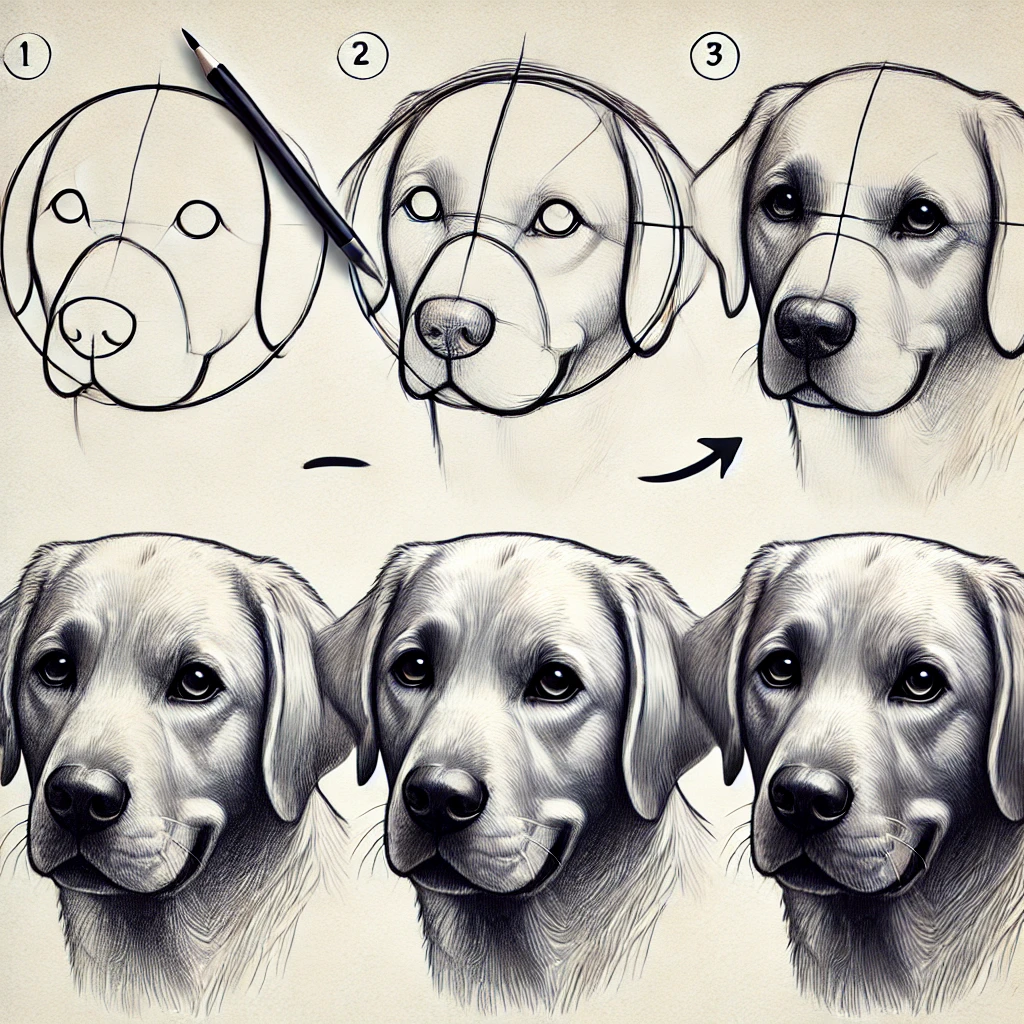
Time to give your dog some personality! 🐕
🎯 Eyes: Draw almond-shaped eyes with small pupils and highlights for realism. 🎯 Nose: Add a small rounded shape with tiny nostrils. 🎯 Mouth: A simple curved line for a gentle smile or open mouth for a playful look. 🎯 Ears: Shape them according to breed—floppy, upright, or rounded.
🔹 Dogs’ expressions are key to making the drawing lively! 🖌️
🖊️ Step 4: Adding Fur Texture & Depth
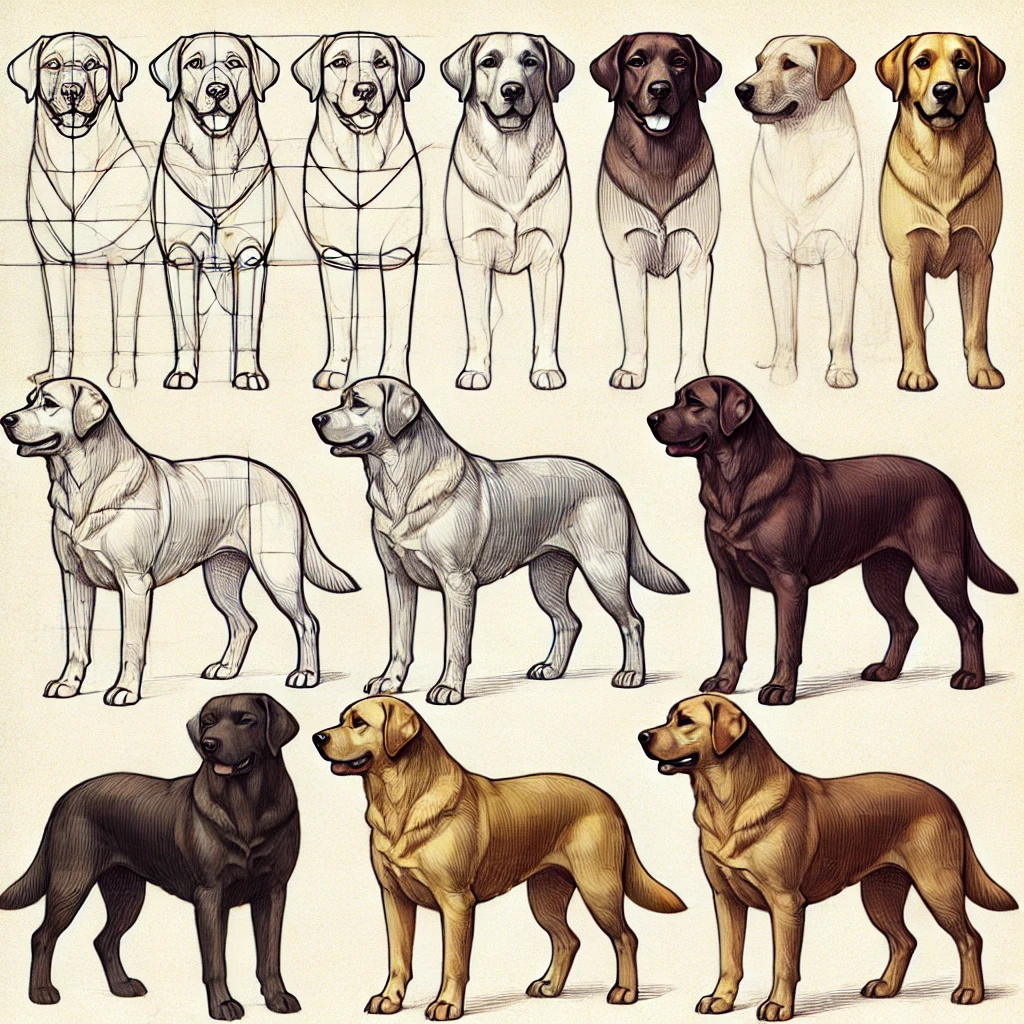
1️⃣ Short Hair: Use short, delicate pencil strokes to create soft fur. 2️⃣ Long Hair: Layer strokes in flowing motions to simulate fluffy textures. 3️⃣ Shading: Darken areas under the ears, neck, and legs to add depth. 4️⃣ Contrast: Erase some areas slightly to create highlights.
✏️ Use a blending stump for smooth shading! 🖍️
🎨 Step 5: Realistic Dog Drawing Section
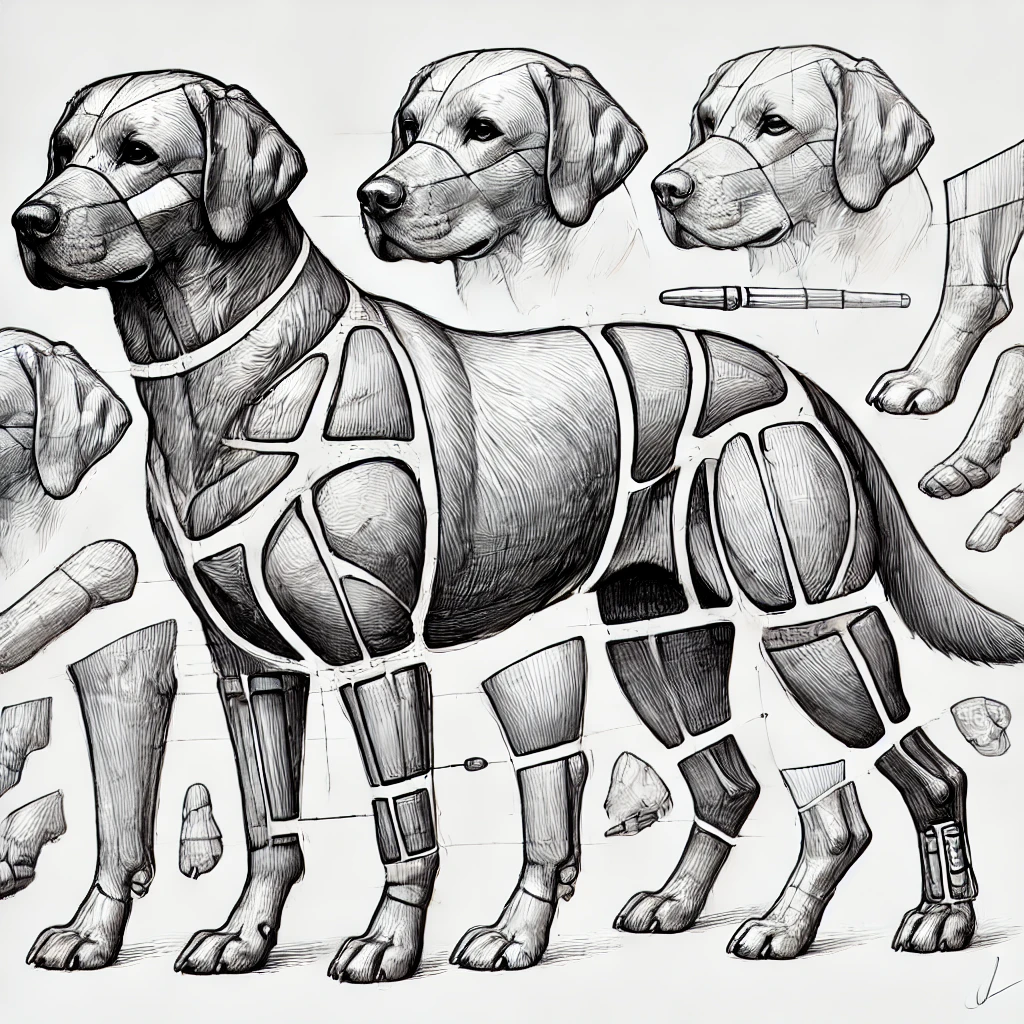
If you want a hyper-realistic result, here’s what to do:
✅ Fine Details: Focus on small elements like fur strands, whiskers, and paw pads. ✅ Layered Shading: Use cross-hatching and smudging techniques to create rich textures. ✅ Reflective Eyes: Add bright highlights for glossy, soulful eyes. ✅ Final Touches: Use an eraser to highlight fur sections and enhance realism.
🐕🦺 This is what makes your drawing stand out from a simple sketch! ✨
🖍️ Step 6: Optional Inking & Coloring

- Outline your final sketch with a fine liner for clarity.
- Use colored pencils or markers for a vibrant touch.
- Blend colors gradually for a soft, natural effect.
🎭 This step enhances your drawing’s depth and visual impact!
🌟 Closing Statement
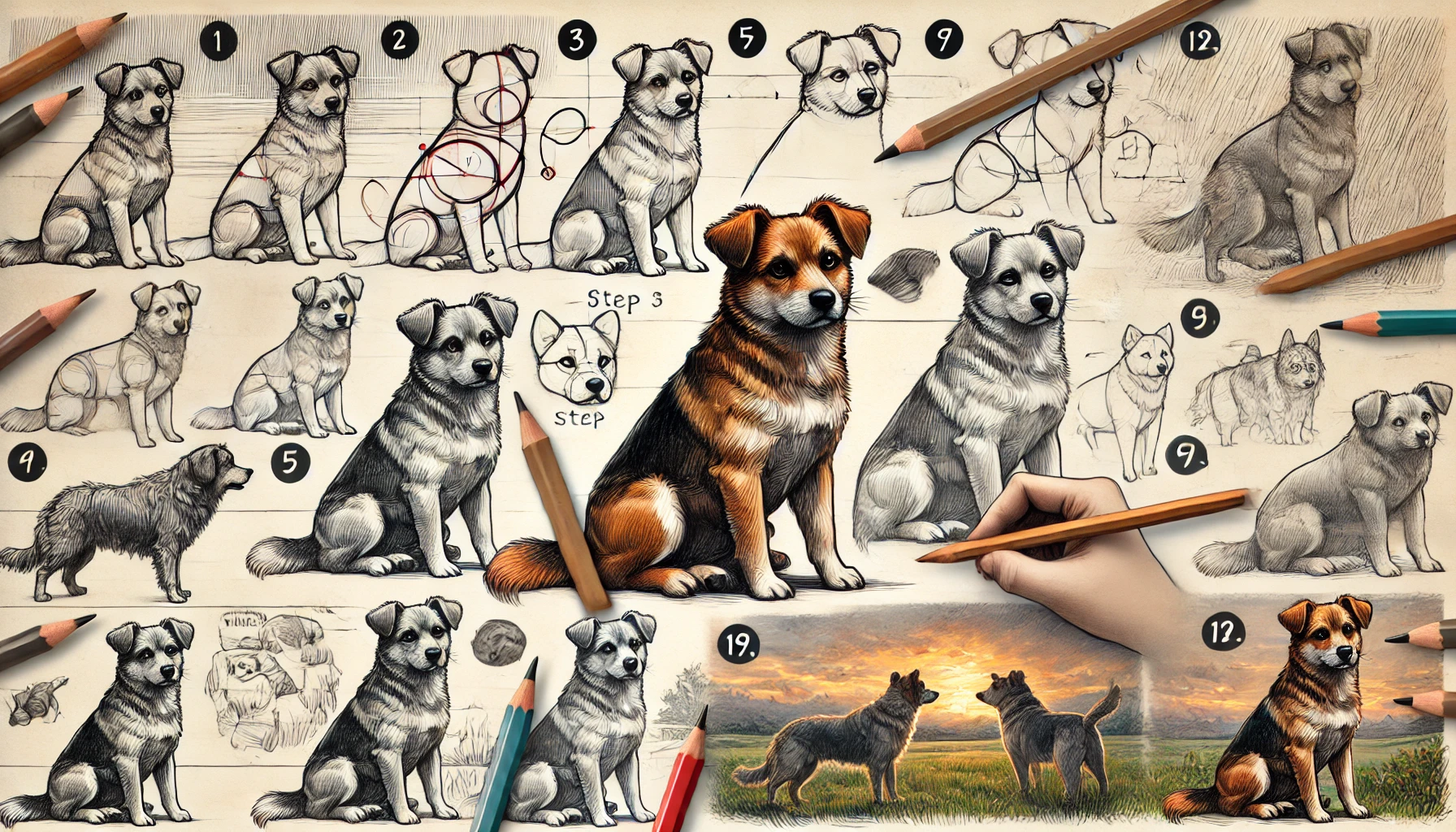
Now you’ve created a stunning dog drawing—combining structured sketching with detailed realism! Whether you prefer cartoon–style, semi–realistic, or ultra-realistic art, this guide ensures an amazing result.
📌 Practice different dog breeds to master various textures and features!
🐶 Happy Drawing! 🖊️🎨
🧐 FAQs (Frequently Asked Questions)

1. What are the best tools for dog drawing?
For beginners, pencils (HB, 2B, and 4B), erasers, fine liners, and blending stumps are great choices. Digital artists can use Wacom tablets, Procreate, or Photoshop.
2. How can I improve my dog drawing skills?
Practice regularly by drawing different breeds, studying real-life dog photos, and experimenting with fur textures, shading, and expressions.
3. Which dog breeds are easiest to draw?
Labradors, Beagles, and Golden Retrievers have simple shapes and fur patterns, making them great for beginners.
4. How do I make my drawing look realistic?
Use layered shading, detailed fur strokes, and highlights in the eyes and nose to achieve a lifelike effect.
5. Can I use reference images?
Absolutely! Reference images help capture proportions, expressions, and unique breed features accurately.
6. What’s the difference between sketching and inking?
Sketching is the rough outline of your drawing, while inking adds definition and clarity by outlining the final shapes.
7. Should I draw digitally or on paper?
Both are great! Paper drawing improves hand coordination, while digital drawing allows easy corrections and advanced effects.
8. How can I add motion to my dog drawing?
Capture movement by sketching dynamic poses, flowing fur, and slight paw lifts to create action.
9. What’s the best way to shade fur?
Use light, directional strokes and blend with a soft brush or tissue to create a realistic fur texture.
10. Where can I find inspiration for dog drawings?
Look at real dogs, photographs, art tutorials, and animated films for ideas and styles! 🐶✨
-

 SMALL DOG BREEDS4 months ago
SMALL DOG BREEDS4 months agoMerle Chihuahua: A Comprehensive Guide
-

 SMALL DOG BREEDS4 months ago
SMALL DOG BREEDS4 months agoMaltese: A Beloved Companion
-

 Large Breeds4 months ago
Large Breeds4 months agoSamoyeds Hypoallergenic: Closer Look at the Breed
-

 SMALL DOG BREEDS4 months ago
SMALL DOG BREEDS4 months agoMerle Pomeranian: A Adorable Companion
-

 Large Breeds4 months ago
Large Breeds4 months agoStandard Poodle Weight: Country Wise
-
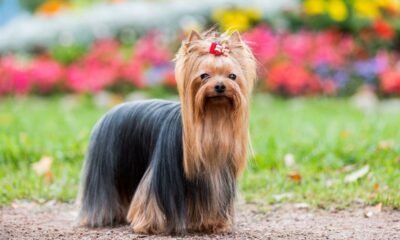
 SMALL DOG BREEDS4 months ago
SMALL DOG BREEDS4 months agoYorkshire Terrier: a Big Personality
-

 MEDIUM BREEDS4 months ago
MEDIUM BREEDS4 months agoAmerican Water Spaniel Colors Chocolate In Crcols:
-

 Terrier Breeds3 months ago
Terrier Breeds3 months agoDog Breeds: by Country & Category



